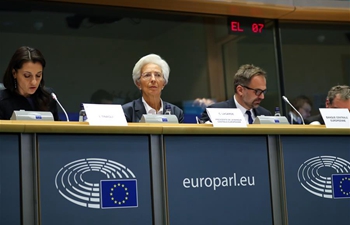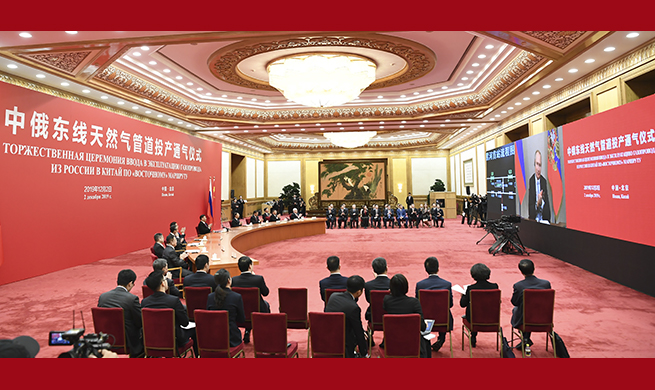BEIJING, Dec. 3 (Xinhua) -- China is taking leading actions in staving off climate change with widely recognized achievements, as a shortfall in global efforts calls for deeper and faster cuts in emission before "terrible consequences for humanity" descend.
The United Nations Climate Change Conference (COP25) kicked off Monday in Madrid, Spain, with China pledging to try hard to conclude negotiations on the details of the implementation of the Paris Agreement.
"One of the most important points is that China opposes any kind of unilateralism and safeguards the authority of multilateralism," said Lu Xinming, deputy director general for climate change with China's Ministry of Ecology and Environment, adding that China will work with other parties to help make the conference a success.
China has been actively participating in global climate governance. It adheres to multilateralism and firmly upholds the framework and principles of global climate governance set out in the United Nations Framework Convention on Climate Change, the Kyoto Protocol, the Paris Agreement and their detailed rules of implementation.
The following are some of the highlights of China's recent green efforts and acclaimed contribution to fighting global warming.
China has taken urgent actions to combat climate change and adopted effective policies to strengthen response, demonstrating its commitment to sustainable development and transformation to a low-carbon green economy, according to China's Progress Report on Implementation of the 2030 Agenda for Sustainable Development.
A 2019 study using data from NASA satellites showed that China is leading the increase in greening on land. The researchers found that the global green leaf area has increased by 5 percent since the early 2000s, an area equivalent to all of the Amazon rainforests. At least 25 percent of that gain came in China.
By 2018, China had slashed carbon intensity by 45.8 percent from 2005 levels, meeting the target of a 40 to 45 percent decrease by 2020 ahead of schedule. The figure indicates that the country has avoided emitting 5.26 billion tonnes of carbon dioxide since 2005.
Meanwhile, the share of non-fossil fuels in China's primary energy consumption rose from 12 to 14.3 percent from 2017 to 2018, and power generated from renewable energy sources accounted for 26.7 percent of total power output in 2018.
China is taking the lead in renewable energy to meet its commitments, investing 126.6 billion U.S. dollars in 2017 alone and creating enough capacity to power the United Kingdom seven times over, according to leading Swiss financial institution UBS.
China's shift to renewable energy is part of a significant transition that offers a roadmap for developing countries and helps drive technological breakthroughs that will drive down the costs of renewables for consumers everywhere.
"No other country has come close to matching China's dominance in transitioning to a low carbon economy," wrote Michael Baldinger, an official in charge of sustainable and impact investing with UBS, in a research note.
As China continues to reduce its energy intensity, its experience can offer a roadmap for developing countries. Meanwhile, its investments in renewables, both at home and abroad, can help to drive additional technological breakthroughs that drive down the costs of those renewables for consumers everywhere, Baldinger said.
Inger Anderson, executive director of the United Nations Environment Program, said China "has had a tremendous success in demonstrating climate leadership in recent years" through large investments in clean energy and technologies, electric mobility and wide-scale land restoration.
"The problems we face today -- especially environmental ones -- are no longer confined to individual countries or regions. They are global in scope and scale. And an effective response will also be global. For that, we need a staunch multilateralism, and I am pleased to see China taking an active role in promoting this approach," she said.

















